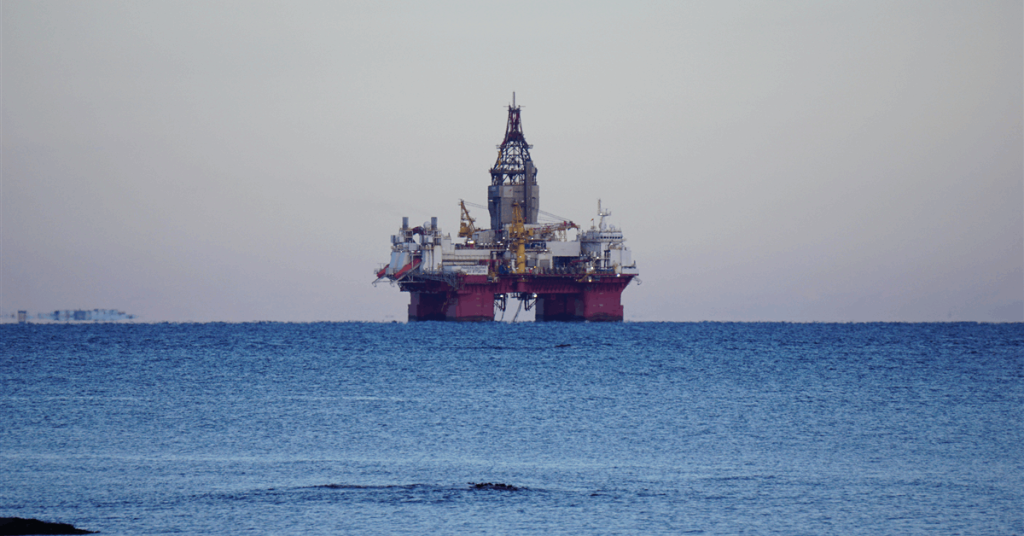Equinor ASA and its partners have made a natural gas discovery with preliminary estimates of 1.9-3.1 million barrels of oil equivalent in the Skred prospect on Norway’s side of the Barents Sea.
Well 7220/5-4 was drilled about 23 kilometers (14.29 miles) north of discovery well 7220/8-1 in the Johan Castberg field in the Barents Sea and 210 kilometers northwest of Hammerfest, the Norwegian Offshore Directorate said in an online statement.
Well 7220/5-4 is the 15th drilled in production license 532, awarded 2009 and now has nine oil-producing wells, according to online information from the upstream regulator.
Majority state-owned Equinor operates license 532 with a 46.3 percent stake through Equinor Energy AS. Var Energi ASA owns 30 percent. State-owned Petoro AS holds 23.7 percent.
The latest well, drilled by the COSLProspector rig of China’s state-owned China Oilfield Services Ltd., aimed to prove petroleum in Middle Jurassic reservoir rocks.
In the primary target, the Sto Formation, drilling encountered a 14-meter (45.93-feet) gas column in 70 meters of sandstone with good reservoir quality, the Directorate said.
“In the lower part of the Nordmela Formation, the well also encountered gas in a 3-meter thick isolated sandstone layer with moderate to good reservoir quality”, it added.
“Above the primary exploration target, the well encountered a 14-meter thick sandstone layer from the Cretaceous, where a 1-2-meter thick zone in the lower part of the reservoir was filled with oil. The reservoir quality is poor to moderate”.
Well 7220/5-4 was drilled to a vertical depth of 2,144 meters below sea level. The site has a water depth of 415 meters. Drilling was terminated in the Fruholmen Formation from the Late Triassic.
“The licensees will assess the discovery with a view toward a possible tie-in to the Johan Castberg field”, the Directorate said.
In late March Equinor started producing oil in Johan Castberg. Recoverable volumes were initially estimated to be 450-650 million barrels. Equinor said it had identified 250-550 million new recoverable barrels.
In June Equinor said Johan Castberg has ramped up to its capacity of 220,000 barrels of oil per day. “This increases energy deliveries from the Barents Sea by 150 percent”, Equinor said.
Johan Castberg is the third field developed in the Norwegian Barents Sea after Snohvit, which started production 2007, and Goliat, which followed suit 2016.
As of year-end 2024 estimated resource volumes on the Norwegian continental shelf rose 36 million standard cubic meters of oil equivalent (scmoe) to 15.61 billion scmoe – before accounting for production, according to a report by the Directorate February 2025.
The total figure consisted of 8.73 billion scmoe produced, 2.26 billion scmoe of reserves, 651 million scmoe of contingent resources in fields, 472 million scmoe of contingent resources in discoveries and 3.5 billion scmoe of undiscovered resources.
The produced volume increased 239 million scmoe from 2023, while reserves fell 205 million scmoe. Total contingent resources fell 17 million scmoe against 2023. Undiscovered resources grew 20 million scmoe against 2023.
The increase in undiscovered resources came from opened areas, with no change in undiscovered resources in unopened areas. “This change results from a reduction in undiscovered resources in the North Sea, coupled with increases in the Barents Sea and in the Norwegian Sea”, the Directorate said.
“Large areas in the Barents Sea have yet to be opened for petroleum activity, and this is where the greatest expected value for undiscovered resources can be found”, it said.
To contact the author, email jov.onsat@rigzone.com
What do you think? We’d love to hear from you, join the conversation on the
Rigzone Energy Network.
The Rigzone Energy Network is a new social experience created for you and all energy professionals to Speak Up about our industry, share knowledge, connect with peers and industry insiders and engage in a professional community that will empower your career in energy.
element
var scriptTag = document.createElement(‘script’);
scriptTag.src = url;
scriptTag.async = true;
scriptTag.onload = implementationCode;
scriptTag.onreadystatechange = implementationCode;
location.appendChild(scriptTag);
};
var div = document.getElementById(‘rigzonelogo’);
div.innerHTML += ” +
‘‘ +
”;
var initJobSearch = function () {
//console.log(“call back”);
}
var addMetaPixel = function () {
if (-1 > -1 || -1 > -1) {
/*Meta Pixel Code*/
!function(f,b,e,v,n,t,s)
{if(f.fbq)return;n=f.fbq=function(){n.callMethod?
n.callMethod.apply(n,arguments):n.queue.push(arguments)};
if(!f._fbq)f._fbq=n;n.push=n;n.loaded=!0;n.version=’2.0′;
n.queue=[];t=b.createElement(e);t.async=!0;
t.src=v;s=b.getElementsByTagName(e)[0];
s.parentNode.insertBefore(t,s)}(window, document,’script’,
‘https://connect.facebook.net/en_US/fbevents.js’);
fbq(‘init’, ‘1517407191885185’);
fbq(‘track’, ‘PageView’);
/*End Meta Pixel Code*/
} else if (0 > -1 && 82 > -1)
{
/*Meta Pixel Code*/
!function(f,b,e,v,n,t,s)
{if(f.fbq)return;n=f.fbq=function(){n.callMethod?
n.callMethod.apply(n,arguments):n.queue.push(arguments)};
if(!f._fbq)f._fbq=n;n.push=n;n.loaded=!0;n.version=’2.0′;
n.queue=[];t=b.createElement(e);t.async=!0;
t.src=v;s=b.getElementsByTagName(e)[0];
s.parentNode.insertBefore(t,s)}(window, document,’script’,
‘https://connect.facebook.net/en_US/fbevents.js’);
fbq(‘init’, ‘1517407191885185’);
fbq(‘track’, ‘PageView’);
/*End Meta Pixel Code*/
}
}
// function gtmFunctionForLayout()
// {
//loadJS(“https://www.googletagmanager.com/gtag/js?id=G-K6ZDLWV6VX”, initJobSearch, document.body);
//}
// window.onload = (e => {
// setTimeout(
// function () {
// document.addEventListener(“DOMContentLoaded”, function () {
// // Select all anchor elements with class ‘ui-tabs-anchor’
// const anchors = document.querySelectorAll(‘a .ui-tabs-anchor’);
// // Loop through each anchor and remove the role attribute if it is set to “presentation”
// anchors.forEach(anchor => {
// if (anchor.getAttribute(‘role’) === ‘presentation’) {
// anchor.removeAttribute(‘role’);
// }
// });
// });
// }
// , 200);
//});

